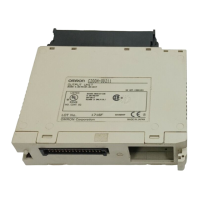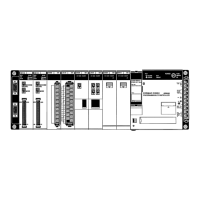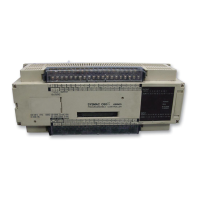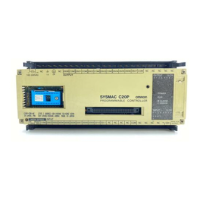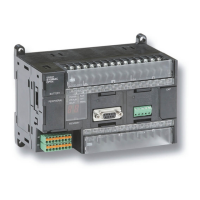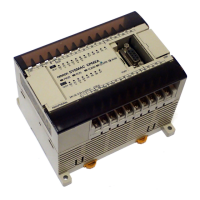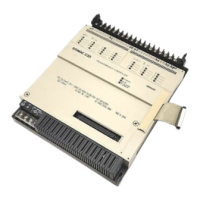!
119
Caution The IR and SR areas are considered as separate data areas. If an operand has access to one
area,
it doesn’t necessarily mean that the same
operand will have access to the other area. The
border
between the IR and SR areas can, however
, be crossed for a single operand, i.e., the last
bit
in the IR area may be specified for an operand that requires more than one word as
long as the
SR area is also allowed for that operand.
The
Flags
subsection lists flags that
are af
fected by execution of an instruction.
These flags include the following SR area flags.
Abbreviation Name Bit
ER Instruction Execution Error Flag 25503
CY Carry Flag 25504
GR Greater Than Flag 25505
EQ Equals Flag 25506
LE Less Than Flag 25507
OF Overflow Flag 25404
UF Underflow Flag 25405
ER is the flag most commonly used for monitoring an instruction’s execution.
When
ER goes ON, it indicates that an error has
occurred in attempting to exe
-
cute
the current instruction. The
Flags
subsection of each instruction lists possi
-
ble
reasons for ER being
ON. ER will turn ON if operands are not entered cor
-
rectly.
Instructions are
not executed when ER is ON. A table of instructions and
the
flags they af
fect is provided in
Appendix C Error and Arithmetic Flag Opera
-
tion.
Indirect Addressing When
the DM area is specified for an operand, an indirect address can be used.
Indirect
DM
addressing is specified by placing an asterisk before the DM:
∗DM.
When an indirect DM address is specified, the
designated DM word will contain
the
address of the DM word that contains the data that will be used as the operand
of
the instruction. If, for example,
∗
DM 0001 was designated as the first operand
and LR 00 as the second operand of MOV(21), the contents of DM 0001 was
1111,
and DM 1
11
1 contained 5555, the value 5555 would be moved to LR 00.
MOV(21)
∗DM 0001
LR 00
Word Content
DM 0000 4C59
DM 0001 1111
DM 0002 F35A
DM 1111 5555
DM 1113 2506
DM 1114 D541
5555 moved
to LR 00.
Indicates
DM 1111.
Indirect
address
When
using indirect addressing, the address of the desired word must be in BCD
and
it must specify a word within the DM area. In the above
example, the content
of ∗DM 0000 would have to be in BCD between 0000 and 1999.
Designating Constants Although data area addresses are most often given as operands, many oper-
ands and all definers are input as constants. The available value range for a
given
definer or operand depends on the particular instruction that
uses it. Con
-
stants
must also be entered in the form required by the instruction, i.e., in BCD or
in hexadecimal.
5-4 Differentiated Instructions
Most instructions are provided in both differentiated and non-differentiated
forms. Differentiated instructions are distinguished by an @ in front of the in-
struction mnemonic.
Differentiated Instructions Section 5-4
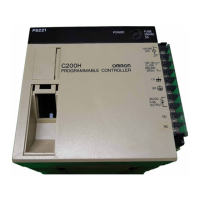
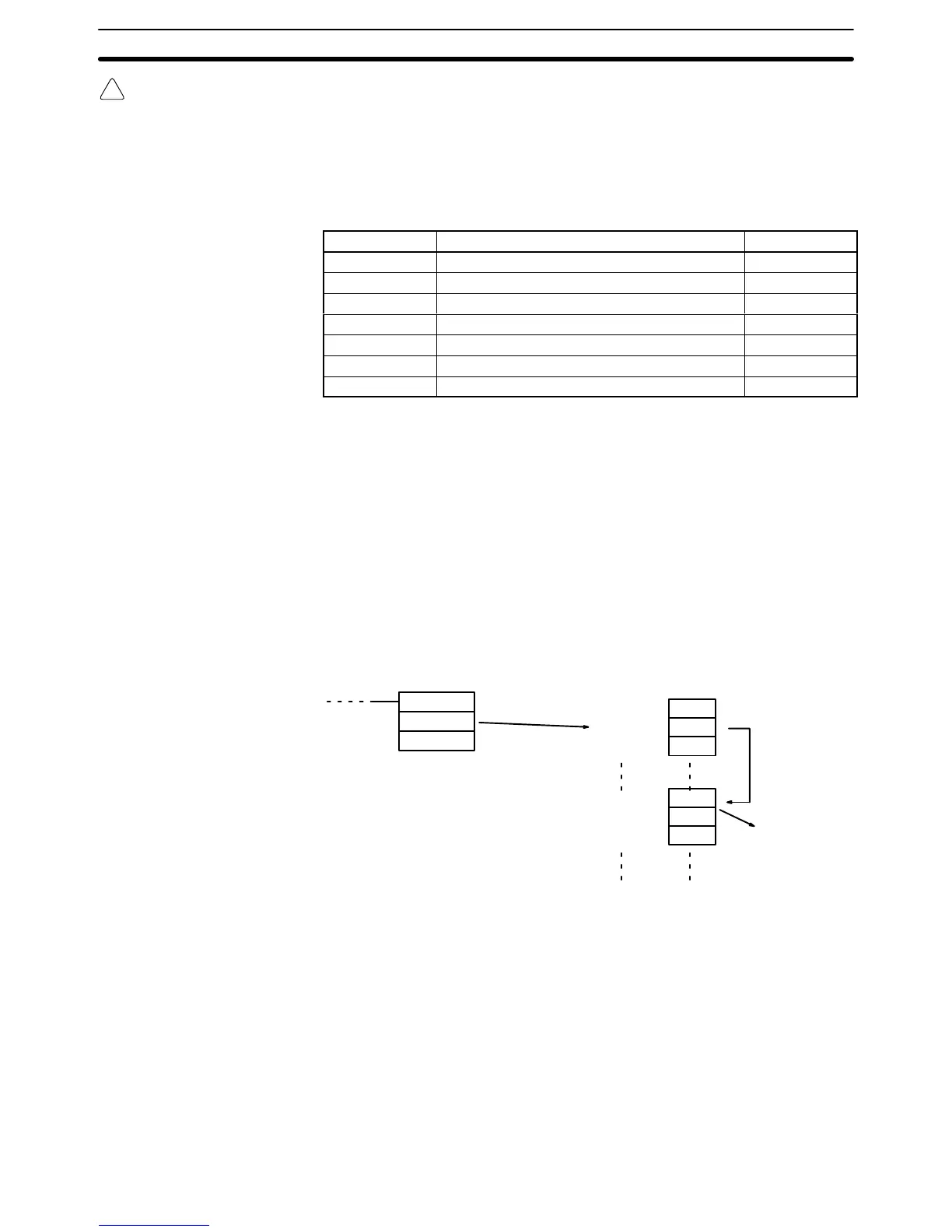